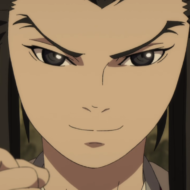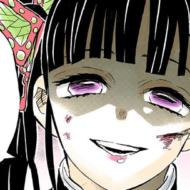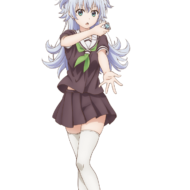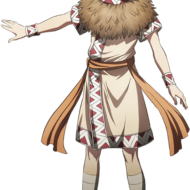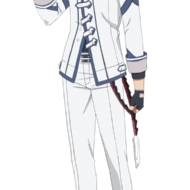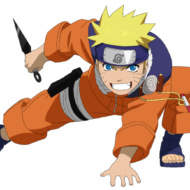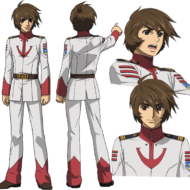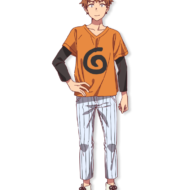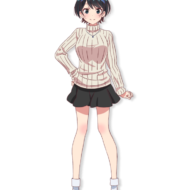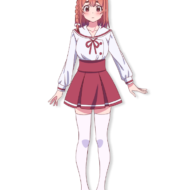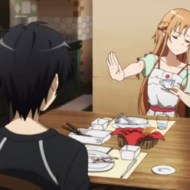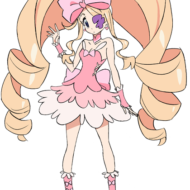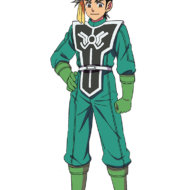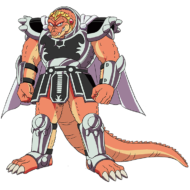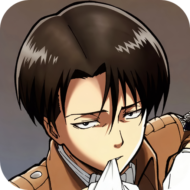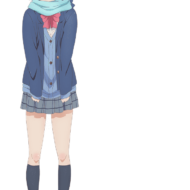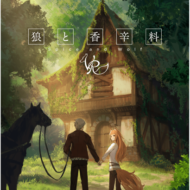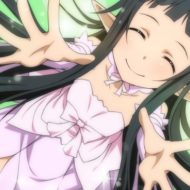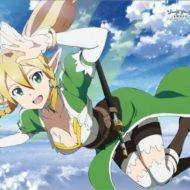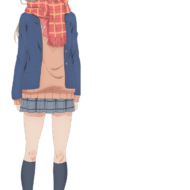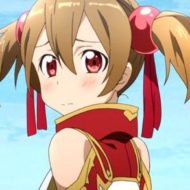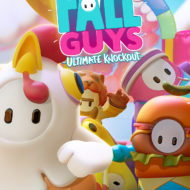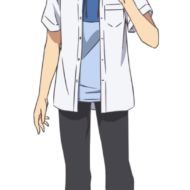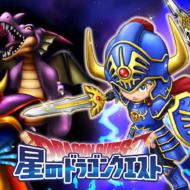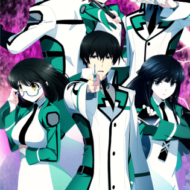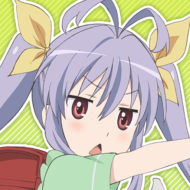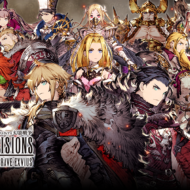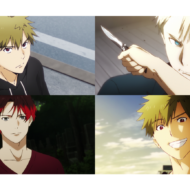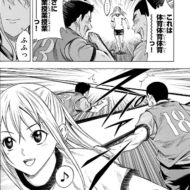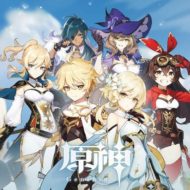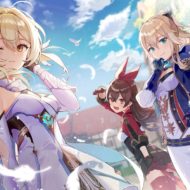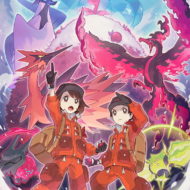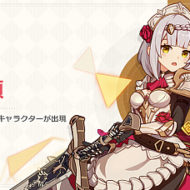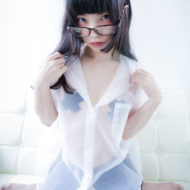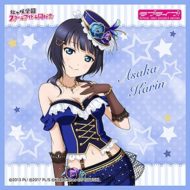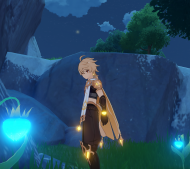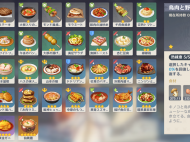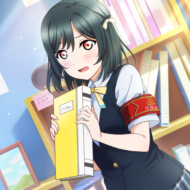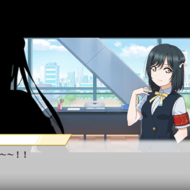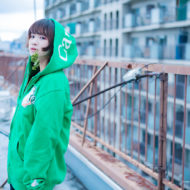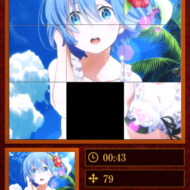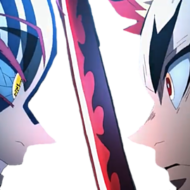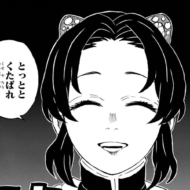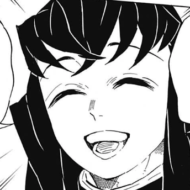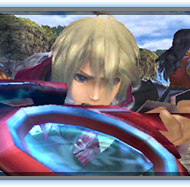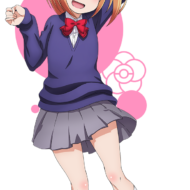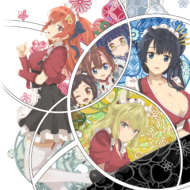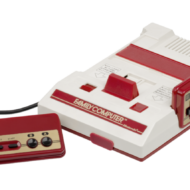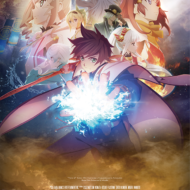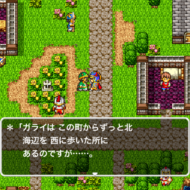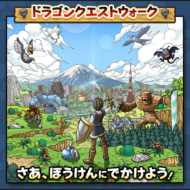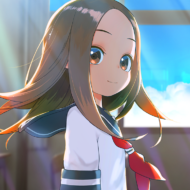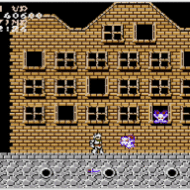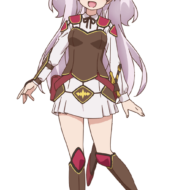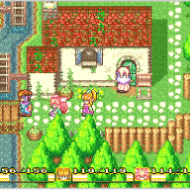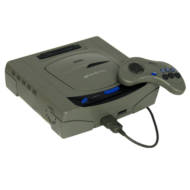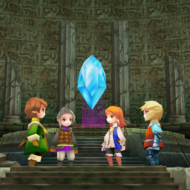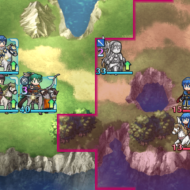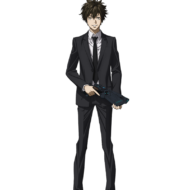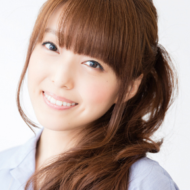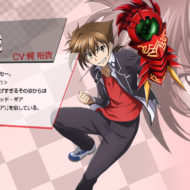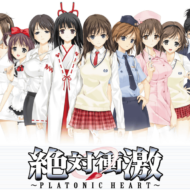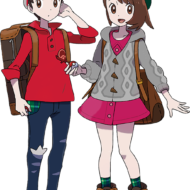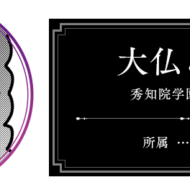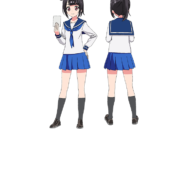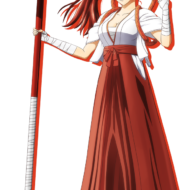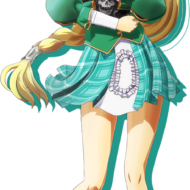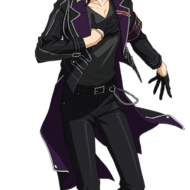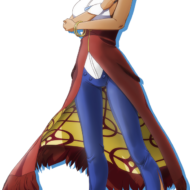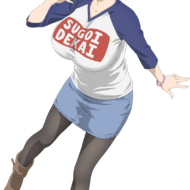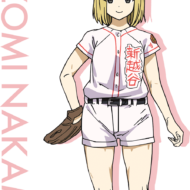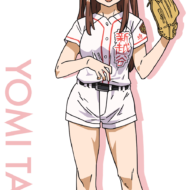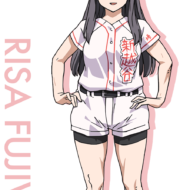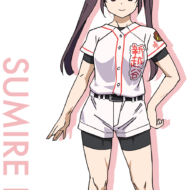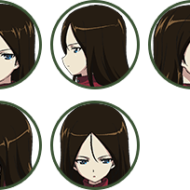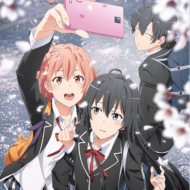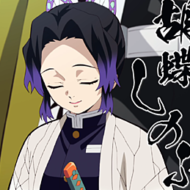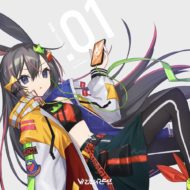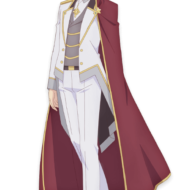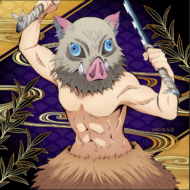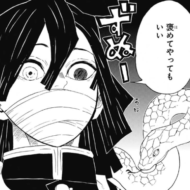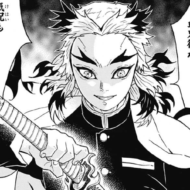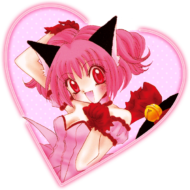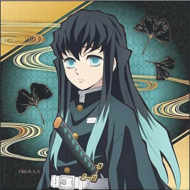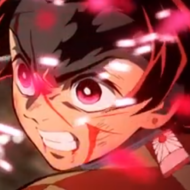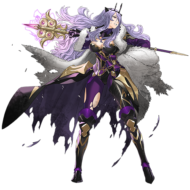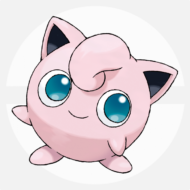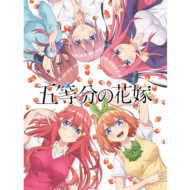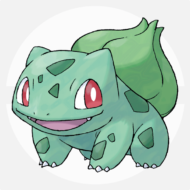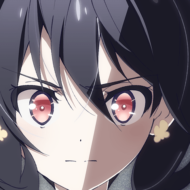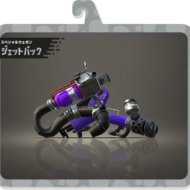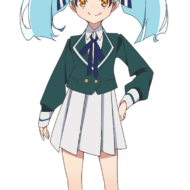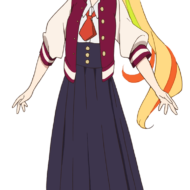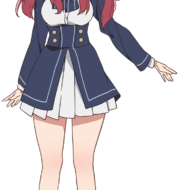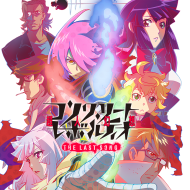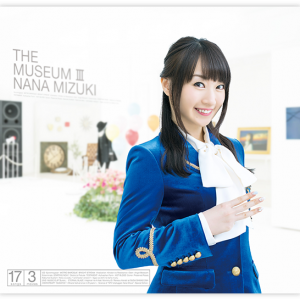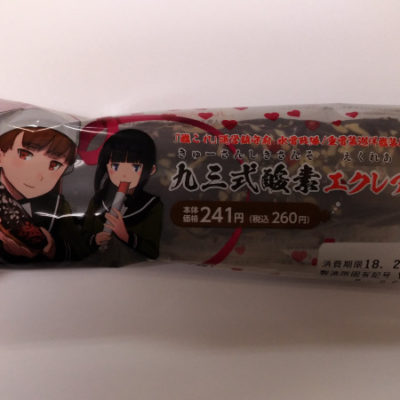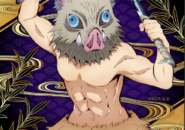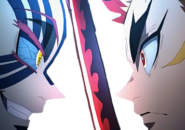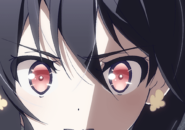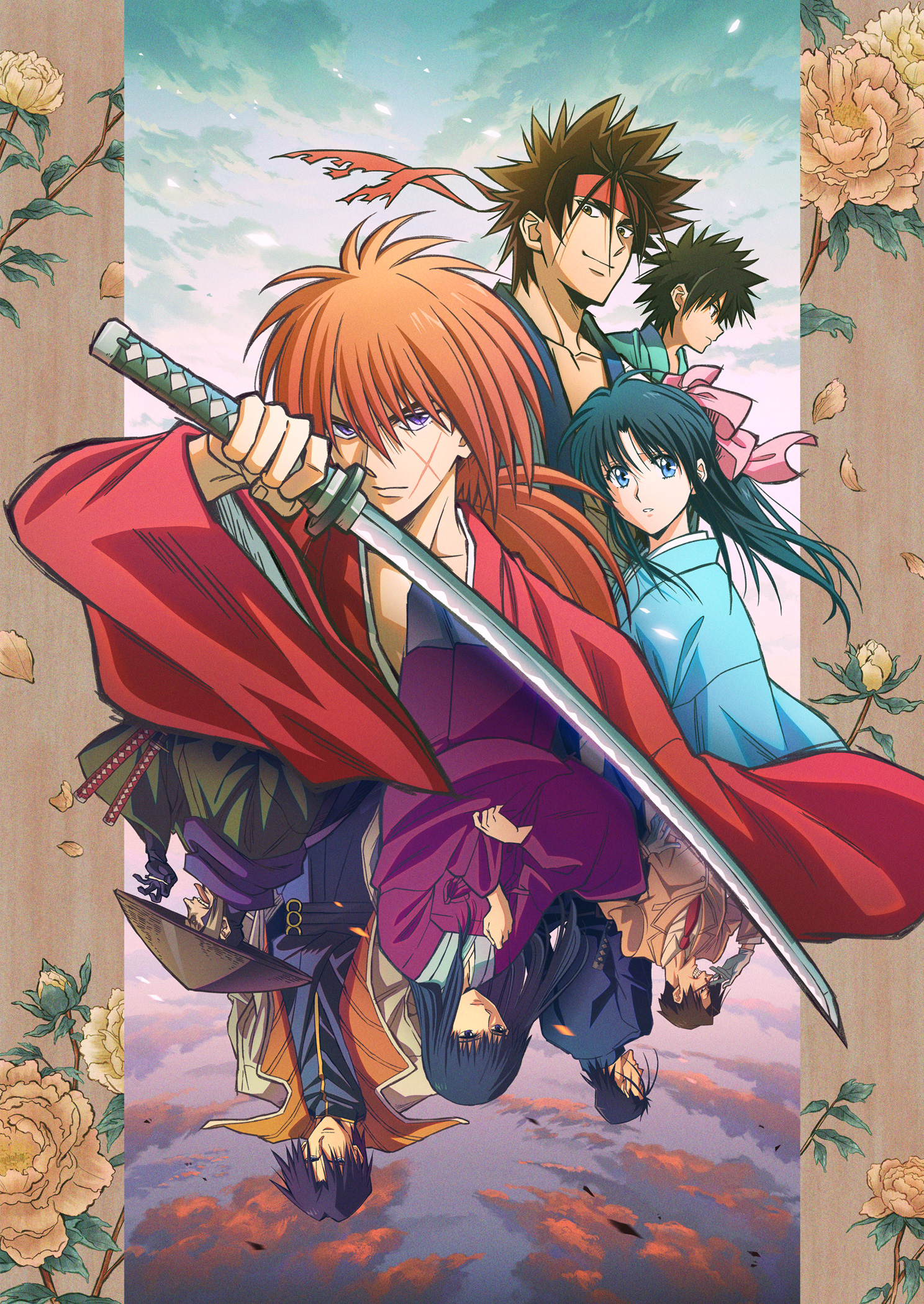
(Image quote: TV anime “Rurouni Kenshin -Meiji Swordsman Romantic Story-” official website https://rurouni-kenshin.com/)
A special feature on “Rurouni Kenshin -Meiji Swordsman Romantan-“, which will be remade into an anime from the summer of 2023!
We will introduce everything about “Ruroken”, such as its popularity at the time of serialization, the anime that was broadcast in the 90s, the controversial OVA, and the current situation!
A new period drama that appeared in the golden age of jump

(Image quote: Amazon)
In the 1990s, Weekly Shonen Jump was an overly luxurious manga magazine with most of the published works being blockbusters, and for children at the time, it was like a bible.
In 1994, right in the middle of the golden age of Jump, “Rurouni Kenshin -Meiji Swordsman Romantic Story-” began serialization.
Eventually, this work became the flagship work of JUMP and recorded a huge hit with a cumulative circulation of 72 million copies, but in fact, the serialization was not decided immediately.
It has undergone two read-out publications before the start of serialization.
The world view of “Ruroken” was first depicted in the one-shot work “Sengoku Mikazuki” published in the 1992 “Weekly Shonen Jump Special Issue 1992 Spring Special”.
This work, which is also the debut work of the author, Nobuhiro Watsuki, is about Seijuro Hiko, a user of the Hiten Sanken-ryu who runs through the world of Sengoku, meets a boy named Isshinta, and is inspired by a woman who loves each other. A story about recapturing Princess Natsu.
Seijuro Hiko depicted in this work is a different person from the character of the same name in “Ruroken”, but there is no doubt that this work is the beginning of the Garuroken world.
In the same year, he published “Rurouni -Meiji Swordsman Romantic Story-” in “Weekly Shonen Jump Special Issue 1992 Winter Special”.
This is currently positioned as a pilot version, and the setting is different from the main story of “Ruroken”.
This one-shot was well received, and the second Rurouni was published in Weekly Shonen Jump the following year.
It was positioned like a prequel to the original, and was well received by Jump readers, so it was decided to start serialization from issue 19 in 1994.
・Work published in Weekly Shonen Jump 1994 No.19
Rurouni Kenshin -Meiji Swordsman Romantic Story- Nobuhiro Watsuki
Dragon Ball Akira Toriyama
SLAM DUNK Takehiko Inoue
Yu Yu Hakusho Yoshihiro Togashi
Captain Tsubasa World Youth Edition Yoichi Takahashi
Very! Lucky Man Hiroshi Gamo
NINKU -Shinobi Sky- Kiriyama Kouji
This is the police station in front of Kameari Park in Katsushika Ward Osamu Akimoto
BØY Haruto Umezawa
Dragon Quest -The Great Adventure of Dai- Koji Inada and Riku Sanjo
JoJo’s Bizarre Adventure Hirohiko Araki
Hell Warrior Demon King Makoto Karibe
New Jungle King Tar-chan ♡ Masaya Tokuhiro
Rokudenashi Blues Masanori Morita
Bonbonzaka High School Drama Club Yutaka Takahashi
Shadow Warrior Ieyasu Tokugawa Tetsuo Hara, Keiichiro Ryu, Noboru Aikawa
D・N・A² ~That Guy Lost Somewhere~ Masakazu Katsura
Suizan Police Gang Shinobu Kaitani
Hell Teacher Nube Go Okano, Sho Makura
The King is a Donkey ~The Bluff Empire Strikes Back~ Shokichi Naniwa
At that time, “Dragon Ball”, “Slam Dunk”, and “Yu Yu Hakusho” were called the three pillars, and they were absolutely popular.
Every Tuesday, the day after the release of Jump, the whole classroom was talking about Jump works, so the children at that time had high expectations for the new serialization Ruroken.
However, even after more than 20 weeks have passed since the start of the serialization, Ruroken’s posting order was fixed at the bottom.
Children at that time had the impression that period dramas were “old-fashioned”, and battles with reverse blades didn’t seem to come to mind.
The turning point was the appearance of Aoshi Shinomori.
Until then, the main characters, including the main character, Kenshin Himura, continued to show their faces, and battles with small villains continued. was.
Meanwhile, the appearance of a formidable enemy for the first time, and because he is a handsome character, the reader’s attention will rise at once.
By the time Kenshin and Aoshi had a direct confrontation, the publication order had increased significantly, and although there were some up and down movements, there were more opportunities to enter the top 5. , It became a new popular work of Jump.
As a billboard work after the completion of the three pillars

(Image quote: Amazon)
In the summer of 1994, just before Ruroken came to prominence, Yuhaku, one of the three pillars, ended its serialization.
Furthermore, the serialization of Dragon Ball finished the following year, and Slam Dunk the following year, and the circulation of Jump, which recorded a maximum of 6.53 million copies, began to decline.
Despite the loss of its three pillars, JUMP still had many hit titles, but it seems that the sense of loss that their signature series ended one after another was immeasurable. GTO” was surpassed by Weekly Shonen Magazine in terms of number of copies, and it was losing the title of No. 1 Shonen Magazine.
In the mid-to-late 1990s, which could be called the winter era, Ruroken was the new signboard work that supported Jump.
1995 Ruroken opens with a fight against Raijuta Isurugi.
However, compared to Aoshi, this enemy character, Rai Juuta, was more petty and lacking in flair, and was not well received by readers at the time. (As an aside, Raijuuta seems to have been remembered because he was too small, and after the spread of the Internet, he became popular mainly as a joke character.)
This was reflected in the popularity of the works, and the rankings of these works fluctuated considerably around this time.
But then a new enemy emerges that once again excites the reader.
I’m Hajime Saito, the former leader of the Shinsengumi’s 3rd division.
Although he uses a real person as a motif, he has the belief of “evil, immediate, slashing” and the special move of “Gagatsu”. There is also a stance that makes you want to grab the reader’s heart in no time.
With the battle between Saito and Kenshin, the popularity of Ruroken rose again.
Immediately after the battle between the two, the existence of that man is finally hinted at.
It is the appearance of Shishio Makoto.
The main story of Ruroken is divided into three parts, “Tokyo”, “Kyoto”, and “Jinchu”, but the Kyoto edition in the middle is a large feature with Shishio Shinji as the biggest enemy. episode.
From the beginning, there is a series of raging developments that excite readers, such as “The assassination of Toshimichi Okubo by a mysterious gentleman (Sojiro Seta),” “Farewell between Kenshin and Kaoru,” “Sanosuke and Saito fighting,” and “Aoshi’s reappearance.” Continuing on, when the introduction of the Kyoto edition ended, the publication order was also fixed at the top.
Then, the story of the Kyoto arc began in earnest, and with the appearance of the special attack unit “Juppontou” under Shishio’s direct control, the main characters vs. the strongest corps, which can be said to be the royal road of jumping, became an easy-to-understand composition even for children, and as the fan base expanded, the popularity exploded.
At the peak of that momentum, the anime began broadcasting, and Ruroken quickly rose to become one of Jump’s flagship works.
Anime audience ratings slumped after original development

(Image quote: Amazon)
The anime “Rurouni Kenshin -Meiji Swordsman Romantan-“, which started in 1996, was broadcast in the golden slot.
However, it seems that the audience rating was forced to struggle a little.
Nowadays, when it comes to anime, it’s important to see how many people watch it through distribution, but in 1996 there was no Internet distribution, and there was no DVD, let alone Blu-ray.
Therefore, the index to measure the popularity of anime is not the distribution record or disk sales, but only the TV audience rating.
As it’s Jump’s flagship work, expectations were high for it to be on par with Dragon Ball, Slam Dunk, and Yuhaku… but the actual numbers are much lower.
・90s jump anime average/highest audience rating
Average 20.5%, maximum 27.5% Dragon Ball Z
Average 17.6%, maximum 24.7% Yu Yu Hakusho
Average 17.0%, maximum 19.1% Kochikame
Average 15.6%, maximum 20.3% Magical Taruruto-kun (morning broadcast)
Average 15.3%, maximum 21.4% slam dunk
Average 14.6%, maximum 19.7% Dragon Ball GT
Average 13.3%, maximum 20.3% Doctor Slump (re-animation)
Average 12.6%, maximum 22.1% NinkuAverage 12.2%, maximum 16.0% Rurouni Kenshin
Average 11.3%, Maximum 14.0% Hell Teacher Nube
Average 10.9%, maximum 16.2% Green Makibao
Average 10.9%, maximum 13.4% Jungle King Tar-chan
Average*9.9%, Maximum 11.9% Die size
Average*9.8%, Maximum 14.0% Lucky Man
Average*7.9%, Maximum 14.1% Captain Tsubasa J
Average*6.4%・Highest*7.9% Hanasaka Tenten-kun
Average*6.1%, Maximum*9.4% CITY HUNTER ’91 (midnight)
Average*5.7%, Maximum*8.7% Yu-Gi-Oh!
Average*4.5%・Maximum*6.3% D・N・A2
Average*4.4%, Maximum*7.0% Kinnikuman Kinnikusei Throne Contest (Morning)
Average*2.1%, Maximum*3.0% Hoshin Engi (Morning)
Average*1.4%, Maximum*2.6% BØY (midnight)
“Dragon Ball GT” and “Doctor Slump”, which were broadcasted at about the same time, were past signboard works, but even that was far below the result.
It’s about the same number as “Ninku”, “Nube”, and “Midori no Makibao”.
Considering the popularity of the original, it can be said that this audience rating is a failure.
So, was it sluggish from the beginning? That’s definitely not the case.
The initial audience rating was a delicate figure of 13.2%, but it gradually increased after that, and remained around 15% until the first half of 1997, although there were some fluctuations.
However, the broadcast frame was moved from October 1997, and the flow changed greatly from Wednesday to Tuesday.
After moving to Tuesday, it rarely exceeded 10%, and it started to hit single digits.
However, frame movement is not the direct cause of the slump.
The Kyoto arc was completed at the end just before the frame move, and after the move, it was developed with an anime original episode instead of the Human Punishment arc, which is considered to be a major cause.
To put it bluntly, it means that the story of Anioli was not evaluated.
However, I don’t think he chose Anioli because he liked the staff at the time.
The original Kyoto edition was completed in June 1997, and the animation was almost catching up with the original.
Therefore, it is reasonable to think that anioli expansion was added as a last resort.
After all, the audience rating did not recover after the animation, and the broadcast ended with 94 episodes.
It’s called de facto discontinuation.
In this way, the animation of Ruroken at the time of serialization has not necessarily been a success.
Controversial human slaughter & OVA development

(Image quote: Amazon)
Ruroken’s anime did not live up to expectations, but the original work continues to be popular as a signboard work.
The Kyoto edition is generally very popular, and from the 97th act, where the Juppontou gathered, to the 151st act of the epilogue of the Kyoto edition, it never fell below 5th place.
Its popularity did not change even after entering the human slaughter edition,Keep pressing.
However, in contrast to the Kyoto edition, which was a classic development of the boys’ magazine, the episode of the Jinchu edition is “Kenshin’s wife and the younger brother of Tomoe Yukishiro, who he killed, appears, and challenges Kenshin for revenge. Coming” is a gloomy content.
It seems that some readers stopped reading here because they could not keep up with this dark development.
In addition, in the middle of the Jinchu arc, an astonishing development awaits the readers who have followed this work up to this point (details are omitted due to serious spoilers), and some readers say that their hearts have broken at this point. It seems to have slipped.
On the other hand, there were voices praising the depiction of a feature-length episode that didn’t look like Jump, even though it was a flagship work, and the Jinchu arc ended with pros and cons.
With Weekly Shonen Jump 1999 No. 43, Ruroken ended its serialization.
At the same time as the last issue of Ruroken, this issue also featured the first serialization of “NARUTO,” which will later become one of Jump’s flagship works.
Furthermore, right before the start of the TV animation of “ONE PIECE” by Eiichiro Oda, who used to be an assistant to Professor Watsuki.
Passing the baton to such next-generation signboard works, Ruroken has successfully completed its role.
However, it was not completely completed here.
In February 1999, when the Jinchu-hen was nearing its final stage, the release of the OVA “Remembrance-hen” began.
This episode tells the story of how Kenshin met his wife Tomoe, how they parted forever, and how the Hitokiri Battosai vowed to never kill.
However, this story is not drawn in the original, but a complete anioli.
The character designs and direction are very different from the TV series, and since it is a work in the style of a serious historical drama, the content is far from the image of “Rurouni Kenshin” that was drawn as a shonen manga.
Furthermore, from 2001 to 2002, he took this direction to a more extreme form and developed “Hoshimo Arc”, which depicts the world after the completion of the original work.
Unlike the reminiscence arc, which was produced by expanding the recollection scene of the original, some fans were furious and controversial because Kenshin’s tragic future was drawn in a form that was almost arbitrary by the anime staff.
A big hit with live action! Ruroken Whirlwind Again

(Image quote: Amazon)
With the end of the serialization in Jump magazine and the development of the OVA coming to a close in 2002, Ruroken will no longer be an active content, but rather a “past blockbuster” or “legendary work”.
Watsuki-sensei started Buso Renkin in 2003, and with the anime adaptation, the image of Ruroken becoming a thing of the past has become even stronger.
It is a matter of course as the trend of the times.
However, it is also sad for the fans who have loved Ruroken.
In 2011 and 2012, we announced the OVA “New Kyoto Edition” with the concept of remaking the Kyoto edition, but it was a part of the 15th anniversary project of animation, and the impression that it was not an event with development potential could not be wiped out. .
However, Ruroken makes a comeback to the world in an unexpected way.
It’s a live action movie.
Live-action adaptations of popular anime have been done frequently for a long time.
Especially in the 1990s, magazines succeeded in acquiring a fan base that was completely different from manga and anime, and at one point showed momentum to overtake Jump.
On the other hand, Jump was not very active in making live-action adaptations, and although some of their works were made into live-action adaptations, they did not become topical works that would lead to hits.
However, the 2006 release of “Death Note” was a big hit, and the tide changed, and Jump also began to focus on live-action adaptations.
The drama “ROOKIES” broadcasted in 2008 also recorded a high audience rating, and the already completed original comics were selling like hot cakes, and quite a big wave was beginning to emerge.
Partly because of that trend, it seems that Rurotsurugi, which is relatively compatible with live action as a period drama, was singled out.
However, at the time of the announcement, it was not so welcomed by fans.
Live-action adaptations of manga and anime always have visual problems such as the obvious cosplay feeling, and because the story has to be packed in only about 2 hours, it becomes a hurried and cut festival even if you don’t like it, so it’s a failure example. There were a lot of them, and I was more worried that Ruroken would be like that too.
Meanwhile, Rurouni Kenshin, which was released in 2012 and was directed by Keishi Otomo and starred by Takeru Sato, was well-received for its beautiful cinematography that evoked a sense of “wa” and full-fledged sword fights. Record box office revenue of over 3 billion yen.
In 2014, a sequel was produced in response to its success, and in 2014, the Kyoto arc was made into a two-part live-action film, and the total of the two works became an explosive hit with a total of about 10 billion yen.
Due to the great success of this live-action film adaptation, the name “Rurouni Kenshin” has spread to the younger generation.
In response to its popularity, in 2017 Jump Square began serializing the regular sequel to the main story, “Rurouni Kenshin -Meiji Swordsman Romantic Story: Hokkaido Edition-“, and it was a big hit from the first volume.
As a result, both in name and reality, Ruroken has returned to being a current popular content rather than a hit in the past.
What about the staff, cast, theme song of the old version & remake version?
◤
るろうに剣心
-明治剣客浪漫譚-
日めくりボイス
◢本日より放送開始日まで
録り下ろしボイスを毎日公開いたします3/27(月)は
緋村剣心(CV:#斉藤壮馬 さん)#るろ剣 #るろうに剣心 pic.twitter.com/8RNxPrxez3— TVアニメ「るろうに剣心 -明治剣客浪漫譚-」公式 (@ruroken_anime) 2023年3月27日
(Image quote: TV anime “Rurouni Kenshin -Meiji Swordsman Romantic Story-” official twitter https://twitter.com/ruroken_anime)
About 25 years have passed since the previous version, so the staff and cast of the remake version of Ruroken have been renewed, and it is being produced by people who are currently active at the forefront.
However, it is not necessarily the case that the staff and cast of the old version have already retired.
Rather, some people are active in recent years with the momentum to repaint their masterpieces.
Here is a summary of such a prominent lineup.
First of all, from the staff and cast of the old version that was broadcast from 1996 to 1998.
Director: Kazuhiro Furuhashi
Series configuration: None
Script: Mitsuru Shimada, Yoshiyuki Suga, Nobuaki Kishima, Michiko Yokote, Akemi Mende, Masashi Togawa, Kazuhiro Furuhashi
Character design: Hideki Hamashu → Fumie Muroi
Guest character design: Kuniyuki Ishii
Art director design: Nobuhito Sakamoto → Masami Hagiwara
Color setting design: Masato Yokoi → Shinji Matsumoto
Director of Photography: Hiroaki Edamitsu → Masahide Okino
Music: Noriyuki Asakura
Editing: Takeshi Seyama
Animation Production: Studio Gallop → Studio Dean
Himura Kenshin: Mayo cool breeze
Kaoru Kamiya: Miki Fujitani
Yahiko Myojin: Mina Tominaga
Sanosuke Sagara: Yuji Ueda
Megumi Takani: Mika Doi
Aoshi Shinomori: Yoshito Yasuhara
Hajime Saito: Hirotaka Suzuoki
OP theme:
“Freckles” JUDY AND MARY (episodes 1-38)
“1/2” Makoto Kawamoto (39-82 episodes)
“Just touch you” CURIO (episodes 83-95)
ED theme:
“Tactics” THE YELLOW MONKEY (episodes 1-12)
“Tears know” Mayo Suzukaze (episodes 13-27)
“HEART OF SWORD ~Dawn Mae~” T.M.Revolution (episodes 28-38, 43-49)
“the Fourth Avenue Café” L’Arc-en-Ciel (episodes 39-42)
“It’s gonna rain!” BONNIE PINK (episodes 50-66)
“1/3 Junjo na Kanjou” SIAM SHADE (Episodes 67-82)
“No!” Yo Izumi (episodes 83-95)
Director Kazuhiro Furuhashi was originally an animator, but later turned to directing and became a director from the 1990 OVA “Ranma 1/2 Nettou Uta Gassen”.
Since 1993, he has also worked on TV animation, and Ruroken is the director’s second TV series.
He has been in charge of the production of all the OVA series, and has been making anime Ruroken for 15 years.
Director Furuhashi has also made remarkable achievements outside of Ruroken.
He worked on “HUNTER x HUNTER” from 1999 to 2001, “Mobile Suit Gundam UC” series from 2010, and has been the director of “SPY x FAMILY” since 2022.
Especially for the first season of SPY x FAMILY, he also worked on the series composition himself and contributed greatly to the global hit of this work.
Director Furuhashi, who supported popular anime in the 90’s, 00’s, 10’s, and 20’s, can be said to be one of Japan’s leading animation directors.
There are many people who were in charge of the script, but all of them are outstanding.
Mitsuru Shimada is a famous screenwriter who participated in many famous works from the 80’s and 90’s, including “Dragon Ball”. I have been active for many years.
Yoshiyuki Suga is also known as one of the supporters of Jump’s popular anime series, including “Slam Dunk” and “Saint Seiya” series composition.
Michiko Yokote is a famous screenwriter among modern anime fans, and she has been in charge of series composition for many works such as “Mr. Takagi” and “Onimai” in recent years.
Seiji Sogawa is known as a screenwriter for GTO, Tenipuri, and Bleach, and was also in charge of the script for the reminiscence edition.
Up to episode 66 was produced by Studio Galop (currently Gallop), and from episode 67 onwards was produced by Studio Dean.
Right after the end of the Kyoto edition, the production changed, and it seems to have turned a new leaf.
The voice of Kenshin, Mayo Suzukaze, is not a voice actress, but a former top star of the Takarazuka Revue Moon Troupe who was also very active as an actress.
Even though she wasn’t her main job, she continued to be in charge of the New Kyoto arc and games until later in life.
Miki Fujitani, who plays Kaoru, is also an actress, not a voice actress.
Mina Tominaga, who plays the role of Yahiko, was a voice actress known for her role as Rollpanna in Anpanman, and now inherits Dokin-chan from Hiromi Tsuru, who passed away.
He also inherited the role of Sazae-san’s bonito, and he is the one who plays an important character in a national anime.
In other jump animations, I was in charge of Maam in the first “Dai Dai” and Miki in “Nube”.
Yuji Ueda, who plays the role of Sayuki, is currently a voice actor under the name of Yuji Ueda.
He is best known for his role as Takeshi in Pokemon.
In the 90’s he also played Akito Tenkawa, the main character in Martian Successor Nadesico.
Mika Doi is well known for her role as Misa Hayase, the heroine of “The Super Dimension Fortress Macross”.
Yoshihito Yasuhara, who plays the role of Aoshi, is still active today.
Hirotaka Suzuoki passed away in 2006 due to illness, and since then Mr. Tsurugi Narita has taken over.
The theme song is a treasure trove of hit songs, especially the first OP song “Sobakasu” achieved a million seller.
More than 25 years after its release, it has become a popular anime song that is often sung at karaoke.
Makoto Kawamoto’s 1/2 is as popular as the freckles, or even more popular as the theme song for Ruroken.
Both songs have lyrics that don’t match the contents of the ruro ken at all, but the opening video was well matched to the song, and it seems that the song became a memorable song for viewers at the time.
The famous ED song is “1/3 no Junjo na Kanjou”.
This ED song recorded a big hit even though the audience rating was sluggish, and it is still a popular anime song because of its impressive title.
Next is the staff and cast of the remake version that will be broadcast from the summer of 2023.
Director: Hideyo Yamamoto
Series composition: Hideyuki Kurata
Character design: Terumi Nishii, Yoko Uchida
Art Director: Yukihiro Saito
Color setting: Aiko Shinohara
Director of Photography: Junpei Takatsu
Music: Yu Takami
Editing: Mai Hasegawa
Animation Production: Leiden Film
Himura Kenshin: Soma Saito
Kamiya Kaoru: Rie Takahashi
Yahiko Myojin: Makoto Koichi
Sanosuke Sagara: Taku Yashiro
Megumi Takani: Saori Onishi
Aoshi Shinomori: Yuma Uchida
Hajime Saito: Satoshi Hino
OP theme:
Hiten Ayase x R-designated
ED theme:
Cutting edge Reol
Director Hideyo Yamamoto is famous for directing “Strike the Blood”, and Jump Animation is also working on “New Prince of Tennis”.
Series composition Hideyuki Kurata has worked on various romantic comedy works such as “My sister” and “Kami only”, but in recent years he has mainly worked on non-comedy works such as “Made in Abyss”.
He’s the perfect person for Ruroken, which has elements of both seriousness and comedy.
Terumi Nishii and Yoko Uchida are both the main animators of “Jujutsu Kaisen” and are expected to play an important role in the anime world in the future.
Animation production is handled by Leiden Films.
Established as a subsidiary of Ultra Super Pictures, in recent years it has also worked on big titles such as “Tokyo Revengers”, and the scale has grown considerably.
Soma Saito, who was selected to play Kenshin II, is a popular voice actor affiliated with 81 Produce.
Since 2014, he has played the role of Tadashi Yamaguchi in “Haikyu!!”, and since then he has continued to play Tsurumaru Kuninaga (Tourabu), Kujo Ten (Ainana), Aoi Hinata & Yuta (Ansta), and Yumeno Gentaro (Hypmai). , Chigiri Leopard (Blue Rock), and other anime that women like.
It was a big topic when the wedding was announced.
Kaoru is played by Rie Takahashi, who is also a popular voice actress.
She has played many popular characters such as Megumin in “Konosuba”, Emilia in “Re:Zero”, and Mr. Takagi, and in 2023, she has received high praise for her role as Ai Hoshino in “Oshi no Ko”.
Makoto Koichi, who plays the role of Yahiko, is a famous voice actor for Haruyuki Yuki in Deremas.
She has a boyish voice and has played many juvenile roles such as the childhood of the main character Lug in “The World’s Greatest Assassin”.
Mr. Taku Yashiro, who plays the role of Sayuki, is a popular voice actor who has gained popularity in anime for women such as Tsubasa Kashiwagi (M-mass), and in recent years has been in charge of leading roles and main characters in various works.
Megumi is played by Saori Onishi.
She has played heroines in various works such as Eriri in “Saekano” and Eyes in “Danmachi”.
Mr. Yuma Uchida, who plays Aoshi, and Mr. Satoshi Hino, who plays Saito, are famous voice actors who need no explanation.
Mr. Uchida is Megumi Fushiguro (Jujutsu Kaisen), and Mr. Hino is familiar with the popular characters of jump animation, such as Rengoku Anjuro (Kimetsu no Yaiba).
The first OP song has been decided to be “Hiten” by Ayase of YOASOBI and popular rapper R-Shitei.
The ED song is “Kirisaki” by Reol.
How many cours will it be broadcast? “Will the Hokkaido edition be animated?”

(Image quote: Amazon)
The remake version of Ruroken will be broadcast in the Noitamina frame from July 7, 2023.
Since it has been announced that two courses will be broadcast in a row, the summer-autumn broadcast has been decided for the time being.
After that, the second season of “Urusei Yatsura” is scheduled to be broadcast in the Noitamina frame, so it seems that it will end after two cours.
As a general rule, remakes of once-popular works are based on the premise that they will be animated right up to the end.
There is no way that all 28 volumes of Ruroken can be completed in two courses, and it is safe to say that it will be broadcast after 2024.
So, how many cours will be broadcast in total?
The old version was visualized up to 6 volumes at the time of 2 courses (24 episodes).
Until the end of the Tokyo arc, just before Saito appears.
Perhaps the remake version will pick up the pace a little more, and the first two courses will be visualized up to the Tokyo arc.
If that happens, the rest will be the Kyoto arc and the Jinchu arc.
If you think about it normally, it will be a total of 6 courses, 2 courses for the Kyoto arc and 2 courses for the Jinchu arc.
However, the Kyoto edition is 8 to 18 volumes, and the Jinchu edition is 18 to 28 volumes, both of which are about 10 volumes.
If it is the same length as the Tokyo edition (1-7 volumes), it is expected to be a little rushed.
However, considering that the 37-volume Daidai was carefully made with almost no episodes cut in 100 episodes (about 8 courses), making all 28 volumes in 6 courses would be a good enough anime. It should be.
The remake version of “Houshin Engi”, which is said to be a failure by many anime fans, has a total of 23 volumes in 2 cours, so as long as it doesn’t go out of control like this, it shouldn’t be a problem.
The question is when will it be completed?
Leiden Film has over 200 employees, which is quite large among animation production companies.
However, it is the largest company such as Toei Animation, which has worked on many jump works such as the aforementioned Daidai, Tom’s Entertainment, which continues to make Conan and Anpanman every week, and Shinei Douga, which is known for Doraemon and Creshin. not.
It seems impossible to produce 6 courses in a short period of time while we already have series works such as Toribe.
Therefore, it is expected that the final episode will be broadcast in 2025 at the earliest, and later at the latest.
Even so, it shouldn’t end with the Kyoto arc, so there’s no need to worry about that.
Another thing that worries me is the animation adaptation of the Hokkaido arc, which is the orthodox sequel.
As I mentioned earlier, I think the remake version will probably be broadcast in 6 cours, so it may be a bit difficult to go further from there.
The Hokkaido edition has sold well enough to be animated on its own, but in terms of name recognition, the serialization in the 90s is strong, and it can’t be helped that the series after that will be postponed.
Of course, if the remake version becomes a big hit, I think that an anime adaptation of the Hokkaido edition will naturally be planned, but it seems that it has not been confirmed at this time.
Summary
With Slam Dunk becoming a big hit, the popularity of Ruroken, which is also the same Jump signboard work, has suddenly increased!
The live-action movie is also a big hit, and since it is a work that is known even to generations who were not even born in the 90s, this re-animation is likely to become a big boom again!

